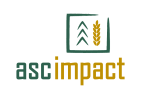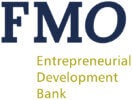A Detailed Look at Africa’s Mineral Map
Africa is a continent of immense natural wealth. It is home to a vast array of minerals, many of which are critical to the global economy.
“
From diamonds in Botswana to gold in South Africa, the mineral map of Africa is diverse and complex. Each region has its unique mineral profile, contributing to the continent’s economic and social fabric.
But what does this mineral map look like? How does it shape the continent’s economic landscape? And what are the implications for the future of mining in Africa?
In this article, we delve into these questions. We explore the rich tapestry of African minerals, their geographical distribution, and their impact on the continent’s economy.
Whether you’re an industry professional, an investor, a student, or simply curious, this comprehensive overview of Africa’s mineral map will provide valuable insights. Join us as we embark on this fascinating journey into Africa’s mineral wealth.
The Rich Tapestry of African Minerals
Africa’s mineral wealth is vast and varied. The continent is a treasure trove of precious and base metals, gemstones, and industrial minerals.
“
Diamonds, for instance, are a significant part of Africa’s mineral wealth. Botswana, South Africa, and Angola are among the world’s leading diamond producers.
Gold is another key mineral. South Africa, Ghana, Tanzania, and Mali are renowned for their abundant gold reserves.
The Democratic Republic of Congo (DRC) is a global powerhouse in cobalt and copper production. These minerals are critical for the manufacture of electric batteries.
Guinea, on the other hand, is home to one of the world’s largest bauxite reserves. Bauxite is essential for aluminum production.
Nigeria’s vast oil reserves are a major contributor to the global energy market. Similarly, Namibia’s uranium deposits play a key role in the nuclear energy sector.
From platinum in South Africa to iron ore in Sierra Leone, the mineral map of Africa is indeed a rich tapestry. Each mineral tells a unique story of geological processes, economic potential, and societal impact.
Key Mineral-Rich Regions in Africa
Africa’s mineral wealth is not evenly distributed. Certain regions are particularly rich in specific minerals.
“
South Africa, for instance, is globally recognized for its mineral wealth. The country is a leading producer of gold, platinum, and diamonds.
The Witwatersrand Basin in South Africa has produced over 40% of all the gold ever mined on earth. This region is a testament to the country’s rich gold mining history.
The Democratic Republic of Congo (DRC) and Zambia form part of the Copperbelt. This region is known for its extensive copper resources.
The DRC is also renowned for its cobalt reserves. Cobalt is a critical component in the production of electric batteries.
Guinea, in West Africa, is home to one of the world’s largest bauxite reserves. Bauxite is essential for aluminum production.
Botswana, South Africa, and Angola are among the world’s leading diamond producers. These countries have a significant concentration of diamond mines.
Namibia is known for its uranium deposits. The country plays a key role in the nuclear energy sector.
The East African Rift system is known for its potential in rare earth elements and natural gas. This region holds promise for future mineral exploration.
The Great Dyke in Zimbabwe is a rich source of platinum and palladium. These minerals are used in various industries, including automotive and jewelry.
Nigeria’s vast oil reserves are a major contributor to the global energy market. The country is a leading oil producer in Africa.
Each of these regions contributes to Africa’s mineral map, highlighting the continent’s diverse geological resources.
The Impact of Mineral Exploration and Mining in Africa
Mineral exploration and mining have significant impacts on Africa’s economy. The mining industry is a major part of Africa’s GDP.
It contributes to job creation and economic development. Many African countries rely heavily on their mineral wealth.
The mining sector also attracts significant foreign direct investment (FDI). This investment is crucial for economic growth.
However, mining also presents challenges. These include political instability and infrastructural deficits.
Environmental concerns are also a major issue. Mining activities can lead to land degradation and pollution.
Despite these challenges, the African Union has initiatives in place. These aim to ensure that mining activities benefit the continent’s socio-economic development.
Artisanal and small-scale mining (ASM) also plays a crucial role. It provides livelihoods for many Africans but often lacks formal regulation.
Overall, the impact of mineral exploration and mining in Africa is complex. It presents both opportunities and challenges for the continent’s development.
Challenges and Opportunities in Africa’s Mining Sector
The mining sector in Africa faces several challenges. Political instability is a major concern. It can disrupt mining operations and deter investors.
Infrastructural deficits also pose a problem. Reliable transport and energy infrastructure are crucial for mining activities.
Environmental concerns are another challenge. Mining can lead to land degradation, water pollution, and loss of biodiversity.
Illegal mining activities also pose a threat. They can harm the economy and the environment.
Despite these challenges, there are also opportunities. Technological advancements can improve mineral exploration techniques. They can make mining more efficient and less invasive.
The African Continental Free Trade Area (AfCFTA) could also impact the mineral trade. It could reduce barriers and increase intra-African commerce.
The exploration of green minerals like lithium is on the rise. These minerals are essential for renewable energy technologies.
Overall, the African mining sector presents both challenges and opportunities. It requires careful management to maximize benefits and minimize risks.
Technological Advancements in Mineral Exploration
Technology plays a key role in mineral exploration. It has led to more efficient and less invasive methods.
Geospatial data and mapping enhance our understanding of Africa’s mineral wealth. They help identify potential mining sites.
Digital technologies like blockchain can also improve transparency. They can track minerals from extraction to market.

The future of mining may even include ocean floor mining. Africa’s extensive coastline offers potential for this.
In conclusion, technology is transforming mineral exploration. It is making it more efficient, transparent, and sustainable.
Sustainable Mining and Environmental Considerations
Sustainable mining is a growing concern in Africa. It aims to balance mineral wealth exploitation with biodiversity conservation.
Environmental sustainability includes rehabilitating mined land. It also involves managing the impact on water resources.
The African Minerals Development Centre promotes sustainable mining. It highlights the transformative role of minerals in Africa’s development.
Illegal mining activities pose a threat to sustainability. They can harm both the economy and the environment.
In conclusion, sustainable mining is crucial for Africa’s future. It ensures the long-term viability of the continent’s rich mineral resources.
The Future of Mining in Africa
The future of mining in Africa holds great potential. One area of interest is the exploration of green minerals like lithium.
Technological advancements could also open up new possibilities. For instance, ocean floor mining could become a reality due to Africa’s extensive coastline.
The African Continental Free Trade Area (AfCFTA) could also impact the future of mining. It could increase intra-African commerce by reducing trade barriers.
In conclusion, the future of mining in Africa is promising. With the right strategies and policies, the continent could lead in the global mineral economy.
Conclusion: Africa’s Role in the Global Mineral Economy
Africa’s mineral wealth is a key player in the global economy. The continent’s vast reserves of minerals like diamonds, gold, and cobalt are in high demand worldwide.
Moreover, Africa’s potential in green minerals could play a significant role in the global shift towards renewable energy. This positions Africa as a crucial supplier in the global low-carbon economy.
However, the continent’s mineral wealth must be managed responsibly. This includes addressing environmental concerns and ensuring fair trade agreements.
In conclusion, Africa’s role in the global mineral economy is significant and growing. With the right strategies, the continent can leverage its mineral wealth for sustainable development.




















































